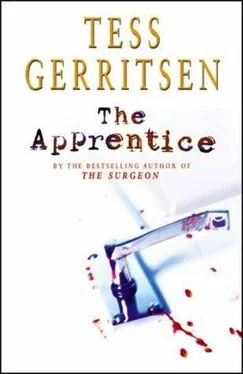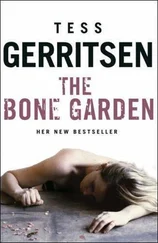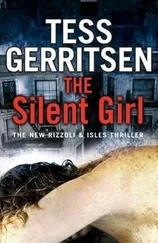She set down her cup as well. “I’d prefer that.”
Dean was the one who stood and crossed to the desk. He brought a bulging accordion folder back to the sitting area and took out a photograph, which he laid on the coffee table in front of her. “June 25, 1999,” he said.
She stared at the image of a bearded man, sitting slumped, a spray of blood on the whitewashed wall behind his head. He was dressed in dark trousers and a torn white shirt. His feet were bare. On his lap was perched a china cup and saucer.
She was still reeling, struggling to process the image, when Dean laid a second photograph next to it. “July 15, 1999,” he said.
Again the victim was a man, this one clean-shaven. Again he had died sitting propped up against a blood-splattered wall.
Dean set down a third photograph of yet another man. But this one was bloated, his belly taut with the expanding gases of decomposition. “September 12,” he said. “The same year.”
She sat stunned by this gallery of the dead, laid out so neatly on the cherrywood table. A record of horror set incongruously among the civilized clutter of coffee cups and teaspoons. As Dean and Conway waited silently, she picked up each photo in turn, forcing herself to take in the details of what made each case unique. But all were variations on the same theme that she had seen played out in the homes of the Yeagers and the Ghents. The silent witness. The conquered, forced to watch the unspeakable.
“What about the women?” she asked. “There must have been women.”
Dean nodded. “Only one was positively identified. The wife of case number three. She was found partly buried in the woods about a week after that photo was taken.”
“Cause of death?”
“Strangulation.”
“Postmortem sexual assault?”
“There was fresh semen collected from her remains.”
Rizzoli took a deep breath. Asked, softly: “And the other two women?”
“Due to the advanced state of decomposition, their identities could not be confirmed.”
“But you had remains?”
“Yes.”
“Why couldn’t you I.D. them?”
“Because we were dealing with more than two bodies. Many, many more.”
She looked up and found herself staring directly into Dean’s eyes. Had he been watching her the whole time, awaiting her startled reaction? In answer to her silent question, he handed her three files.
She opened the first folder and found an autopsy report on one of the male victims. Automatically she flipped to the last page and read the conclusions:
Cause of death: massive hemorrhage due to single slash wound, with complete transection of left carotid artery and left jugular vein.
The Dominator, she thought. It’s his kill.
She let the pages fall back into place. Suddenly she was staring at the first page of the report. At a detail she had missed in her rush to read the conclusions.
It was in the second paragraph: Autopsy performed on 16 July 1999, 22:15, in mobile facility located Gjakove, Kosovo .
She reached for the next two pathology files and focused immediately on the locations of the autopsies.
Peje, Kosovo.
Djakovica, Kosovo.
“The autopsies were done in the field,” said Dean. “Performed, sometimes, under primitive circumstances. Tents and lantern light. No running water. And so many remains to process that we were overwhelmed.”
“These were war crimes investigations,” she said.
He nodded. “I was with the first FBI team that arrived in June 1999. We went at the request of the International Criminal Tribunal for the former Yugoslavia. ICTY. for short. Sixty-five of us were deployed on that first mission. Our job was to locate and preserve evidence in one of the largest crime scenes in history. We collected ballistic evidence from the massacre sites. We exhumed and autopsied over a hundred Albanian victims, and probably missed hundreds more that we couldn’t find. And the whole time we were there, the killing was still going on .”
“Vengeance killings,” said Conway. “Completely predictable, given the context of that war. Or any war, for that matter. Both Agent Dean and I are ex-marines. I served in Vietnam, and Agent Dean was in Desert Storm. We’ve seen things we can’t bring ourselves to talk about, things that make us question why we human beings consider ourselves any better than animals. During the war, it was Serbs killing Albanians, and after the war, it was the Albanian KLA killing Serb civilians. There’s plenty of blood on the hands of both sides.”
“That’s what we thought these homicides were, at first,” said Dean, pointing to the crime scene photos on the coffee table. “Revenge killings in the aftermath of war. It wasn’t our mission to deal with ongoing lawlessness. We were there specifically at the Tribunal’s request, to process war crimes evidence. Not these.”
“Yet you did process them,” said Rizzoli, looking at the FBI letterhead on the autopsy report. “Why?”
“Because I recognized them for what they were,” said Dean. “These murders weren’t based on ethnicity. Two of the men were Albanian; one was a Serb. But they all had something in common. They were married to young wives. Attractive wives, who were abducted from their homes. By the third attack, I knew this killer’s signature. I knew what we were dealing with. But these cases fell under the jurisdiction of the local justice system, not the ICTY, which brought us there.”
“So what was done?” she asked.
“In a word? Nothing. There were no arrests, because no suspect was ever identified.”
“Of course, there was an inquiry,” said Conway. “But consider the situation, Detective. Thousands of war dead buried in over one hundred fifty mass graves. Foreign peacekeeping troops struggling to keep order. Armed outlaws roaming bombed-out villages, just looking for reasons to kill. And the civilians themselves, nursing old rages. It was the Wild West over there, with gun battles erupting over drugs or family feuds or personal vendettas. And almost always, the killing was blamed on ethnic tensions. How could you distinguish one murder from another? There were so many.”
“For a serial killer,” said Dean, “it was paradise on earth.”
She looked at Dean. She had not been surprised to hear of his military service. She’d already seen it in his bearing, his air of command. He would know about war zones, and he’d be familiar with the scenario that military conquerors had always played out. The humiliation of the enemy. The taking of spoils.
“Our unsub was in Kosovo,” she said.
“It’s the sort of place he would thrive on,” said Conway. “Where violent death’s a part of everyday life. A killer could walk into such a place, commit atrocities, and walk out again without anyone noticing the difference. There’s no way of knowing how many murders are written off as mere acts of war.”
“So we may be dealing with a recent immigrant,” said Rizzoli. “A refugee from Kosovo.”
“That’s one possibility,” said Dean.
“A possibility you’ve known all along.”
“Yes.” His answer came without hesitation.
“You withheld vital information. You sat back and watched while the dumb cops ran around in circles.”
“I allowed you to reach your own conclusions.”
“Yes, but without full knowledge of the facts.” She pointed to the photos. “This could have made the difference.”
Dean and Conway looked at each other. Then Conway said, “I’m afraid there’s even more we haven’t told you.”
“More?”
Dean reached into the accordion folder and took out yet another crime scene photo. Though Rizzoli thought she was prepared to confront this fourth image, the impact of the photograph struck her with visceral force. She saw a young and fair-haired man with a wisp of mustache. He was more sinew than muscle, his chest a bony vault of ribs, his thin shoulders jutting forward like white knobs. She could clearly see the man’s dying expression, the muscles of his face frozen into a rictus of horror.
Читать дальше












